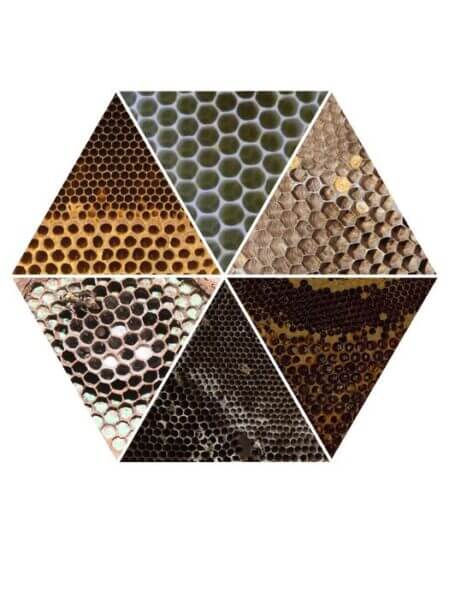In a study published in the journal PLOS Biology on July 27, 2023, researchers found that honey bees and social wasps construct hexagonal cells that appear similar at first glance but have significant differences. Honey bees use wax to build double-sided vertical combs, while wasps utilize paper to construct single-sided horizontal combs with downward-facing openings for each cell.
These hexagonal cells have evolved independently in bees and wasps. The shape of these cells optimizes strength and storage space while minimizing the use of building materials, much like how sharks and whales have similar body plans due to their aquatic environments.
However, the researchers were intrigued by what happens when perfectly hexagonal cells cannot be built. In a subset of honey bee and wasp species, workers construct hexagons of two different sizes: smaller cells for rearing workers and larger cells for rearing reproductives (drones and queens). This size difference presents an architectural challenge in tiling two differently-sized hexagons within a single sheet of comb.
To understand how various species tackled this architectural problem, the researchers needed nest images containing both worker and reproductive cells within the same comb. Dr. Michael L. Smith, Assistant Professor in the Department of Biological Sciences at Auburn University and Affiliate Member of the Max Planck Institute for Animal Behavior, reached out to researchers worldwide for potential images. Using custom-built software, they extracted per-cell metrics from 22,745 individual cells.
They found that in some species, such as Metapolybia mesoamerica, worker and reproductive cells were the same size, eliminating the architectural hurdle. However, in species like Apis andreniformis, where reproductive cells were up to 2.7 times larger than worker cells, a significant building problem arose: how to efficiently combine these vastly different hexagons.
Analyzing 10 species, the researchers observed that as the scale of the building problem increased (the size difference between worker and reproductive cells), workers incorporated non-hexagonal cells. These irregular cells were mainly 5- and 7-sided and consistently built in pairs, with the 5-sided cell on the worker side and the 7-sided cell on the reproductive side. This common pattern was found in all honey bee and wasp species facing a cell-size difference.
To predict the number of non-hexagonal cells incorporated into the worker-to-reproductive cell transition, the researchers developed a mathematical model based on the cell-size difference. Surprisingly, some species consistently performed better than expected. Further investigation revealed that these species also integrated intermediate-sized hexagonal cells into the transition region. These intermediate cells allowed the insects to smoothly transition between sizes without requiring non-hexagonal cells.
Remarkably, despite over 179 million years of evolution separating them, the use of different building materials, and independent origins of hexagonal cells, all the studied bees and wasps arrived at the exact same solution to this scalable architectural problem.
Lead author Dr. Michael L. Smith remarked, “Once we were able to plot out all the data, the results were striking – you could see how the bees and wasps used intermediate-sized cells to make a gradual change, but also how consistently the non-hexagonal cells were arranged in the comb.”
This research sheds light on how collective systems can create adaptive and resilient structures without centralized control. Rather than having a single bee or wasp “architect” overseeing the entire construction, hundreds or even thousands of individuals contribute to the final product.
The study, titled “Honey bees and social wasps reach convergent architectural solutions to nest-building problems,” was published on July 27, 2023, and received funding from the National Science Foundation, the German Research Foundation, a Packard Fellowship for Science and Engineering, and GETTYLABS.
The full manuscript is available in PLOS Biology at the following link: http://journals.plos.org/plosbiology/article?id=10.1371/journal.pbio.3002211.


